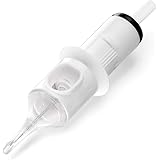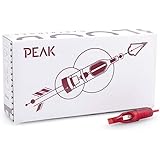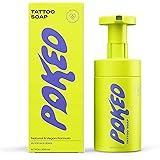Getting a new tattoo is an exciting experience, but the journey doesn’t end when you leave the studio. A significant part of achieving a vibrant, long-lasting piece of art depends entirely on your aftercare. Many people worry about the healing process, wondering if their tattoo is progressing as it should. The video above offers a compelling visual timeline, showcasing a new tattoo seemingly fully healed in just eight days. This rapid healing is certainly achievable with the right approach and diligent care.
Understanding the proper steps for new tattoo care is crucial for preventing infection, preserving ink quality, and ensuring your artwork looks its best for years to come. This guide will delve deeper into the aftercare strategies that can facilitate quick and effective healing, helping you navigate the critical initial days and beyond.
Immediate New Tattoo Aftercare: The First 24 Hours
The initial hours after getting a new tattoo are perhaps the most critical. Your artist will typically bandage your tattoo; this protective covering is essential. It shields the fresh wound from bacteria and airborne contaminants immediately after the session.
Keep the original bandage on for the duration recommended by your artist, usually a few hours, but sometimes up to 24 hours for Saniderm or Tegaderm-style wraps. Removing the bandage too early can expose the raw skin to irritants. Once removed, gently wash the tattoo with unscented antibacterial soap and lukewarm water, then pat dry with a clean paper towel.
The Importance of a Clean Canvas for Healing Tattoos
Maintaining impeccable hygiene is non-negotiable for healing new tattoos. A new tattoo is essentially an open wound, and improper cleaning can lead to bacterial infections. These infections not only compromise your health but can also severely damage the appearance of your tattoo, leading to scarring and faded ink.
Wash your tattoo regularly, typically 2-3 times a day, especially during the first few days. Additionally, always wash your hands thoroughly before touching your healing tattoo. This simple step significantly reduces the risk of introducing harmful bacteria to the vulnerable area.
Daily Routine for Optimal Tattoo Healing
After the initial cleaning, a consistent daily routine becomes your best friend for promoting fast and effective tattoo healing. Consistency ensures the skin remains clean, hydrated, and protected.
Following each wash, apply a thin layer of a fragrance-free, tattoo-specific aftercare product or a plain, unscented lotion. The key is “thin layer” – too much product can smother the skin, preventing it from breathing and potentially trapping moisture, which can encourage bacterial growth. Allow the tattoo to air dry for a few minutes before applying lotion, and gently rub it in until it’s absorbed.
Hydration and Protection: Essential for Skin Recovery
Proper hydration is vital for the skin’s recovery process. Moisturizers help keep the skin supple, which can minimize scabbing and prevent excessive itching. Dry skin can lead to cracking, which might pull out ink and delay healing.
Furthermore, protecting your new tattoo from direct sunlight is crucial. UV rays can cause immediate fading of fresh ink and damage the delicate healing skin. Wear loose-fitting clothing that covers the tattoo when outdoors, or seek shade whenever possible. Avoid swimming pools, hot tubs, and prolonged baths during the healing period, as these environments harbor bacteria and can cause the tattoo to soak excessively, which is detrimental to the healing process.
Understanding the Stages of Tattoo Healing
The visual progression in the video highlights the rapid surface healing that is possible. However, understanding what constitutes “fully healed” is important. The 8-day mark generally refers to the initial epidermal healing, where the outer layer of skin has closed over and the tattoo is no longer an open wound.
The deeper layers of skin (dermis) where the ink resides, take much longer to fully recover, often weeks or even months. During the first week, you might notice some redness, swelling, and a clear or slightly colored fluid (lymphatic fluid) weeping from the tattoo. Days 3-7 typically involve light scabbing and peeling, similar to a sunburn. Resist the urge to pick or scratch! Allowing scabs to fall off naturally is critical for ink retention and preventing scarring.
Recognizing Signs of Healthy Healing vs. Potential Issues
A healthy healing tattoo will gradually lose its redness and swelling. The skin will start to feel smoother, though it may still be dry and itchy. Minor scabbing and peeling are normal parts of this process. The colors will appear less vibrant initially, as a new layer of skin forms over them, but will brighten once fully healed.
Conversely, signs of potential issues include excessive redness, severe swelling that doesn’t subside, unusual pain, pus, a foul odor, or fever. If you experience any of these symptoms, it’s crucial to contact your tattoo artist or a medical professional immediately. Early intervention can prevent serious complications and protect your investment in body art.
Long-Term Care for Lasting Tattoo Vibrancy
Even after your tattoo appears fully healed on the surface (like the 8-day mark shown), continued care ensures its longevity and vibrancy. The skin around your tattoo remains sensitive for an extended period. Therefore, continue to keep it moisturized regularly, especially after showering.
Sun protection remains paramount for the lifetime of your tattoo. Once fully healed, regularly apply a high-SPF sunscreen to your tattooed areas whenever they are exposed to the sun. UV damage is the number one cause of tattoo fading, blurring the intricate details and dulling the colors over time. By diligently protecting your skin and staying hydrated, you actively contribute to the enduring beauty of your new tattoos.











